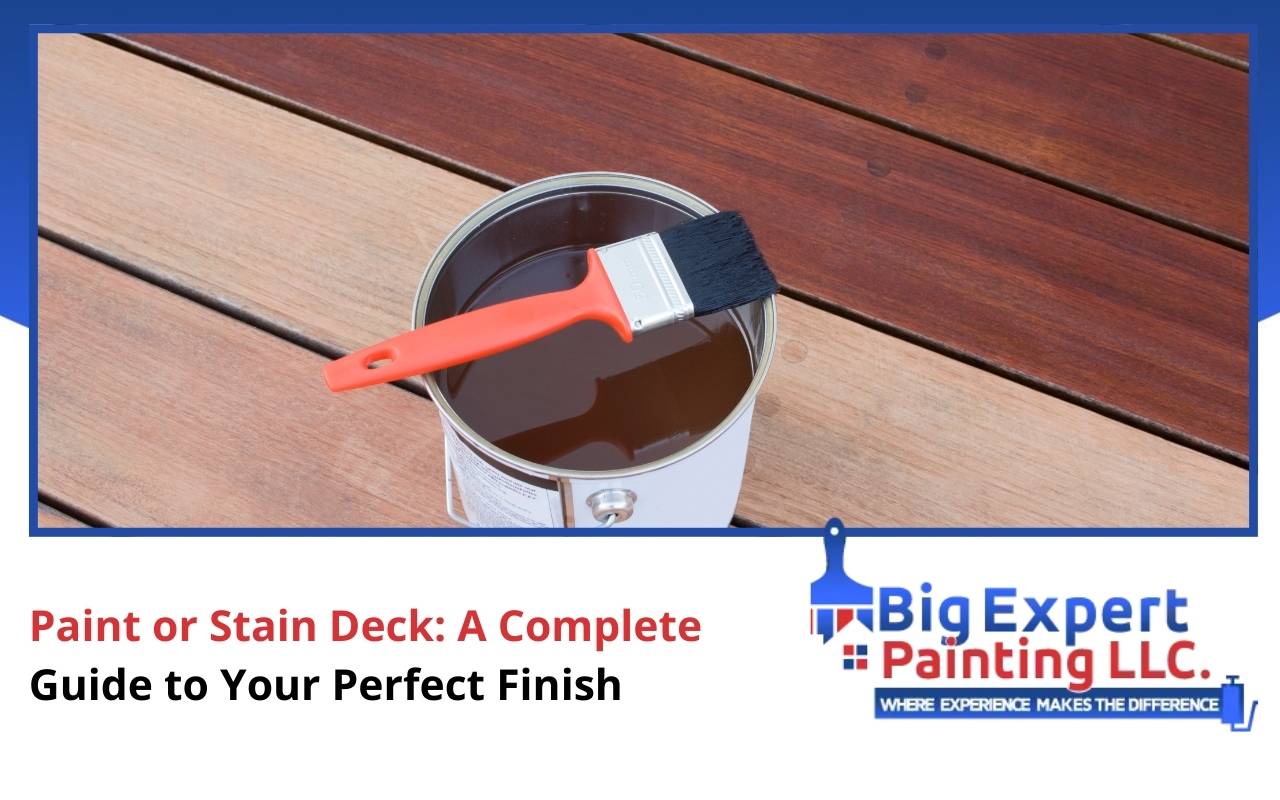
Paint or Stain Deck: A Complete Guide to Your Perfect Finish
When planning to paint or stain deck surfaces, you transform your outdoor living space. This decision influences beauty, protection, and long-term maintenance. Both options bring unique benefits, yet they also have challenges. Therefore, understanding the differences will help you make the right choice for your home.
Understanding the Differences: Paint vs. Stain
The paint or stain deck question revolves around opacity and transparency. Paint forms a solid film, hiding the wood grain completely. Stain penetrates the fibers, enhancing natural patterns while protecting the surface. While paint offers a broader palette, stain provides a natural finish that blends scratches more easily.
In terms of maintenance, paint can chip or peel, requiring scraping and repainting. Stain is easier to refresh but needs reapplication more often. Ultimately, weighing appearance, durability, and upkeep will guide your decision.
Factors to Consider Before Choosing a Finish
Wood type and climate greatly influence how a finish performs. For example, softwoods absorb stain differently than hardwoods. Budget matters as well, since paint often requires more coats. Maintenance expectations also play a role: some finishes demand frequent attention, others far less. Finally, your home’s style should align with the chosen look to maintain harmony in design.
Preparing Your Deck for Staining
Proper preparation ensures your deck stain adheres well. Begin by inspecting boards, tightening nails, and replacing damaged wood. Cleaning is the next step. Use a deck cleaner or oxygen bleach to remove dirt and mildew. Always allow the deck to dry thoroughly before applying stain.
Tips for Properly Applying Deck Stain
Choose mild weather conditions for best results. Work with the grain using a brush, roller, or sprayer. Keep a wet edge to prevent lap marks. Apply thin coats and wipe excess to avoid tacky spots. Always test a small section first to confirm color and absorption.
Common Mistakes to Avoid When Painting Your Deck
Skipping surface preparation is one of the biggest errors. Without cleaning, paint adhesion suffers. Another mistake is skipping primer, which helps paint last longer. Painting in wet or extreme conditions also reduces results. Lastly, applying thick coats increases the risk of peeling. Thin, even layers are always best.
Maintenance Requirements: Paint vs. Stain
Painted decks require inspections and touch-ups. Expect repainting every few years, depending on climate and traffic. Stained decks, however, need less intervention. Minor scratches blend in naturally, and reapplication is quicker. Still, both finishes require consistent cleaning to maintain appeal.
Deck Finish Durability: Comparing Paint and Stain Longevity
Durability depends on both product quality and environment. Paint forms a hard shell that resists weather well but eventually cracks. Stain penetrates deeper, lasting two to five years, depending on formula. Monitoring wear annually ensures longer life, whichever option you choose.
Trending Deck Color Options
Neutral grays, coastal blues, and modern taupes are currently popular. Semi-transparent stains allow wood grain to remain visible, while bold paints create striking visual appeal. Always test color swatches in natural light before finalizing a choice.
Addressing Climate Challenges in Deck Finishing
High-humidity regions benefit from breathable stains that allow moisture to escape. In freeze-thaw climates, flexible finishes prevent cracking. For sun-heavy regions, UV inhibitors protect against fading. Choosing the right formula for your climate extends your deck’s lifespan.
Frequently Asked Questions
How long does deck stain usually last?
Most stains last between two and five years, depending on quality and foot traffic.
Is it easier to maintain paint or stain?
Stain is easier to maintain, as scratches blend naturally. Paint offers strong protection but needs more effort when repairs are required.
Can I switch from stain to paint later?
Yes, but proper preparation, including sanding and priming, is essential before applying paint.
Which option is better for high-humidity areas?
Stain is generally better, as it allows moisture to escape and reduces peeling risk.
Choosing the Perfect Finish for Your Deck
Ultimately, deciding whether to paint or stain deck boards comes down to aesthetics, maintenance effort, and climate. If you prefer a polished, opaque look, paint is ideal. For a natural appearance with easier upkeep, stain is the better choice. Whichever option you select, proper preparation and maintenance ensure long-lasting results.
To achieve professional results, consider deck painting services in NY. For broader home projects, explore residential painting in Babylon NY. When ready to start, reach out through the contact page to book your service today.
